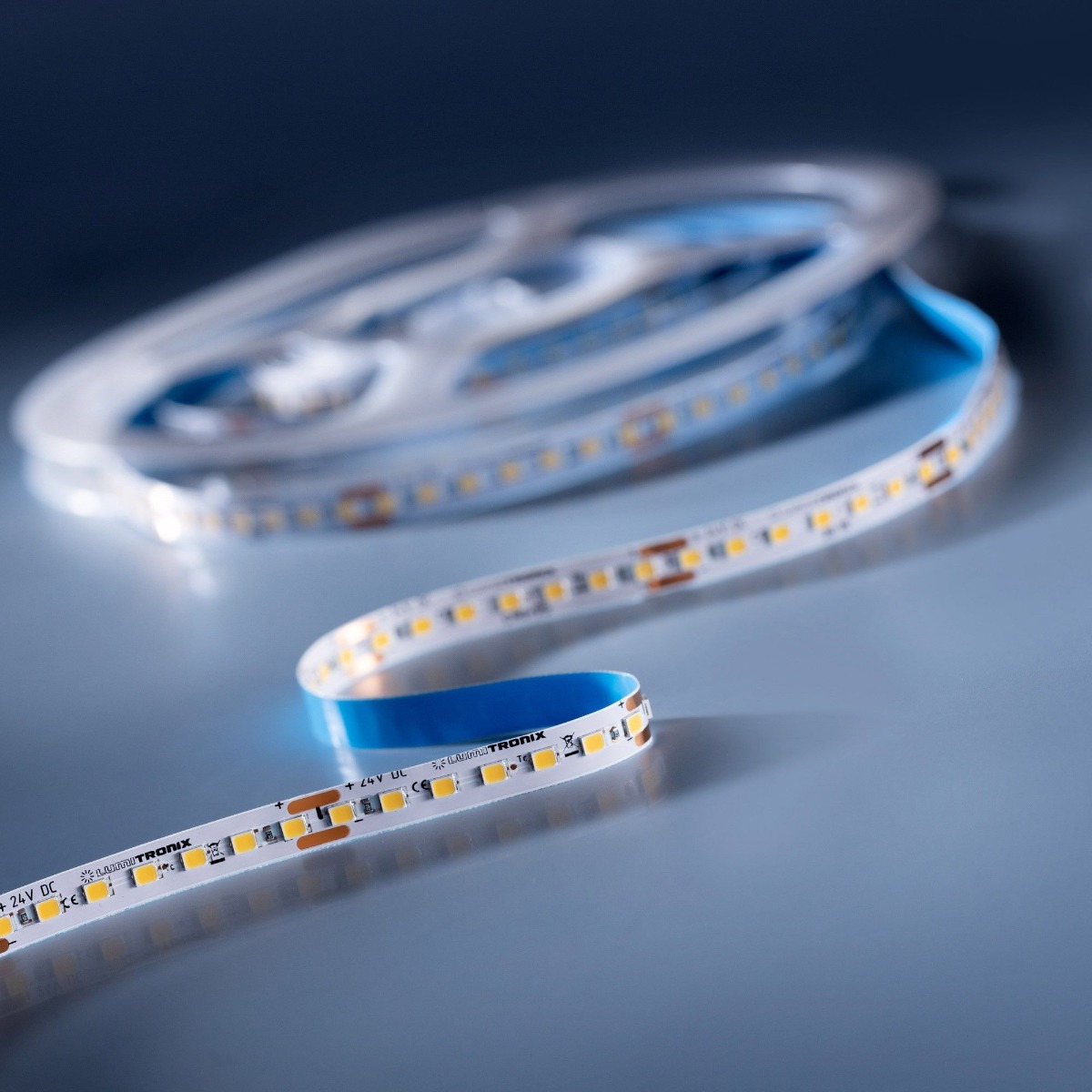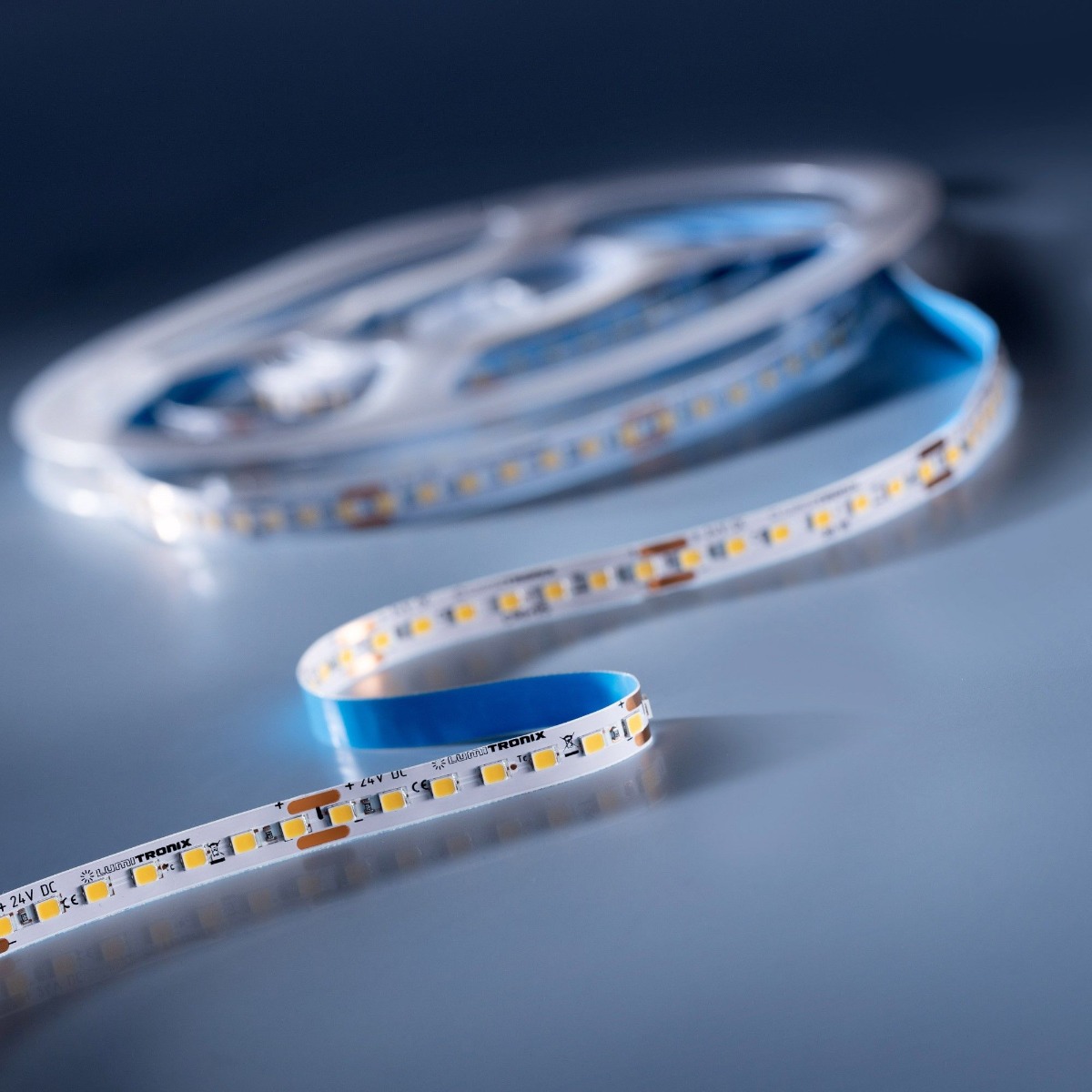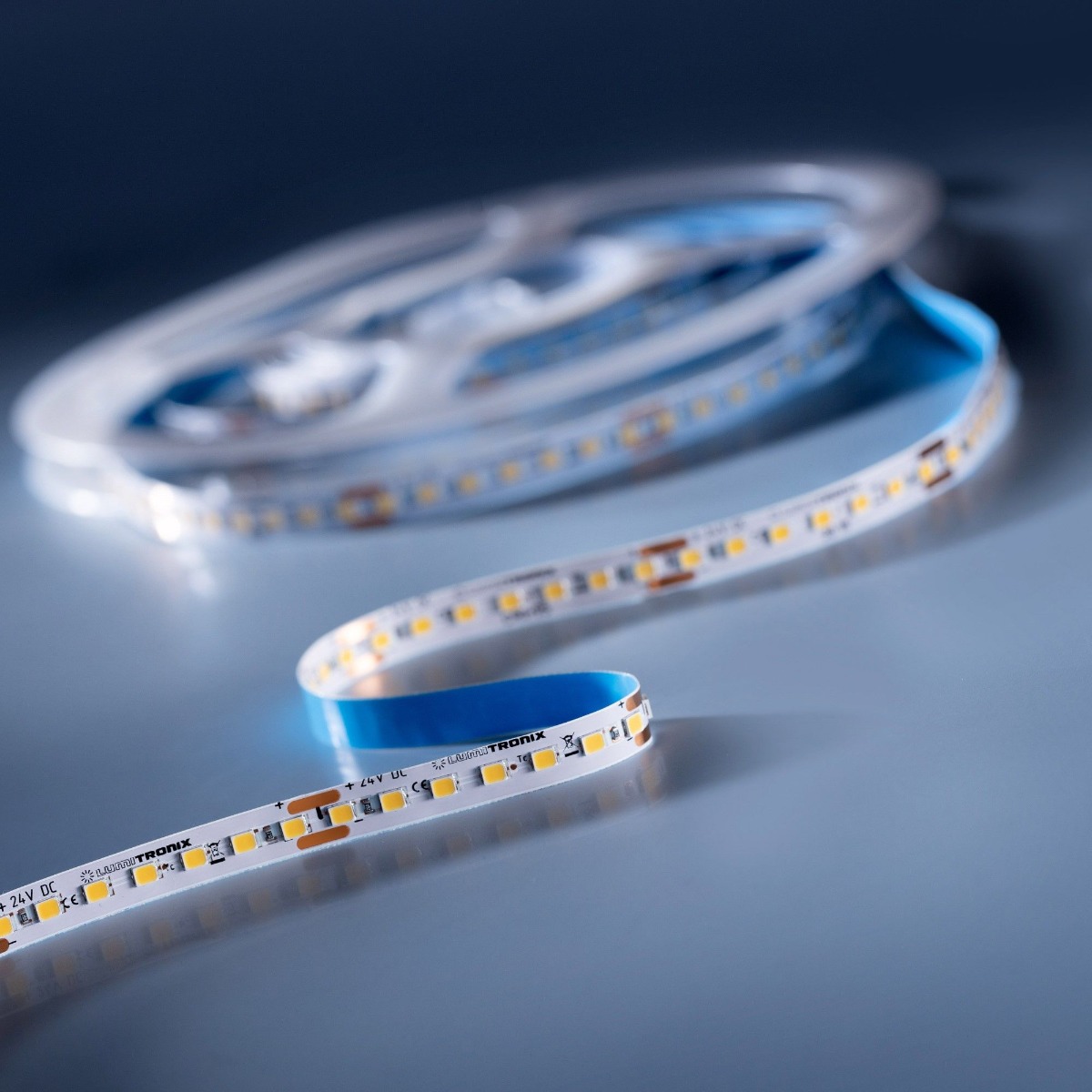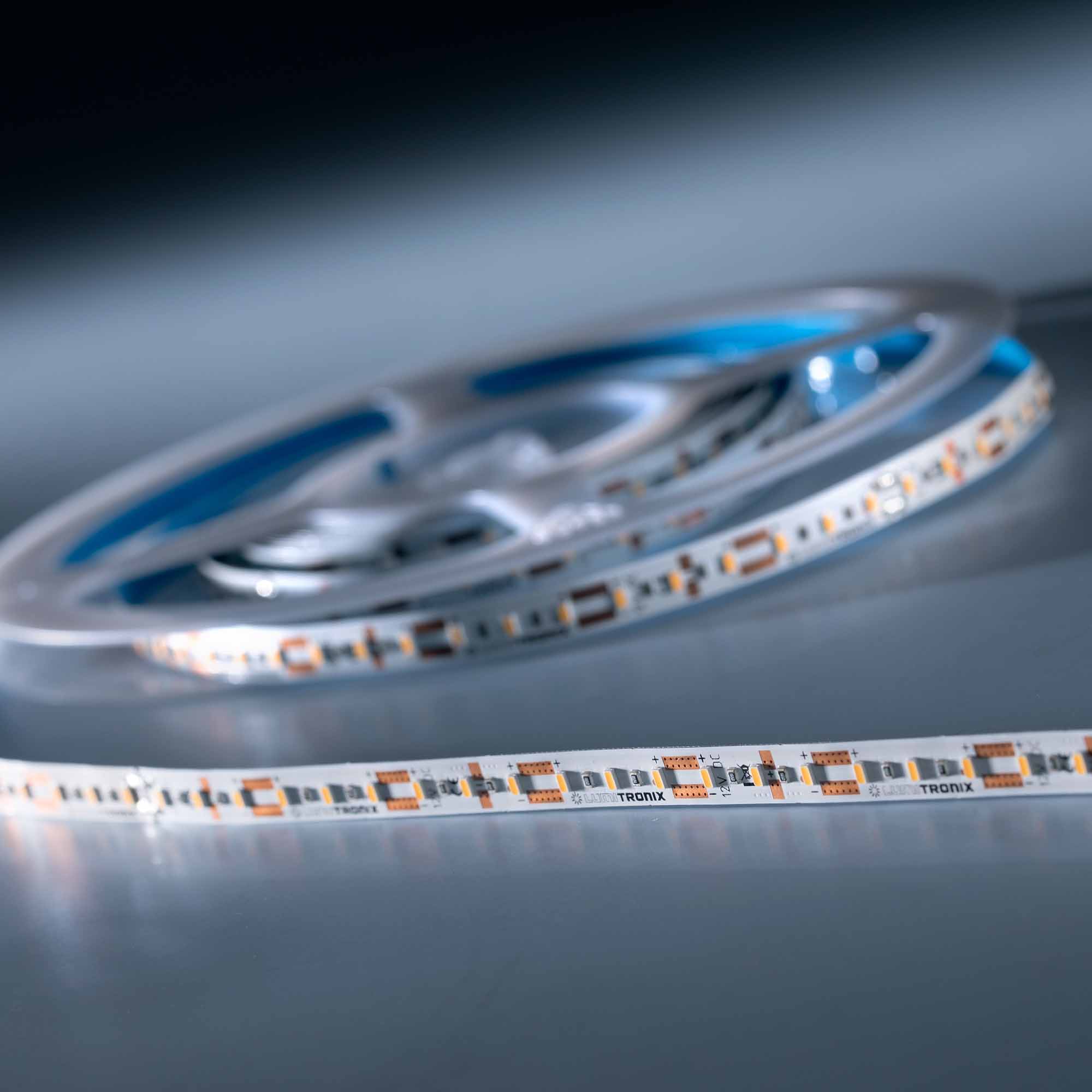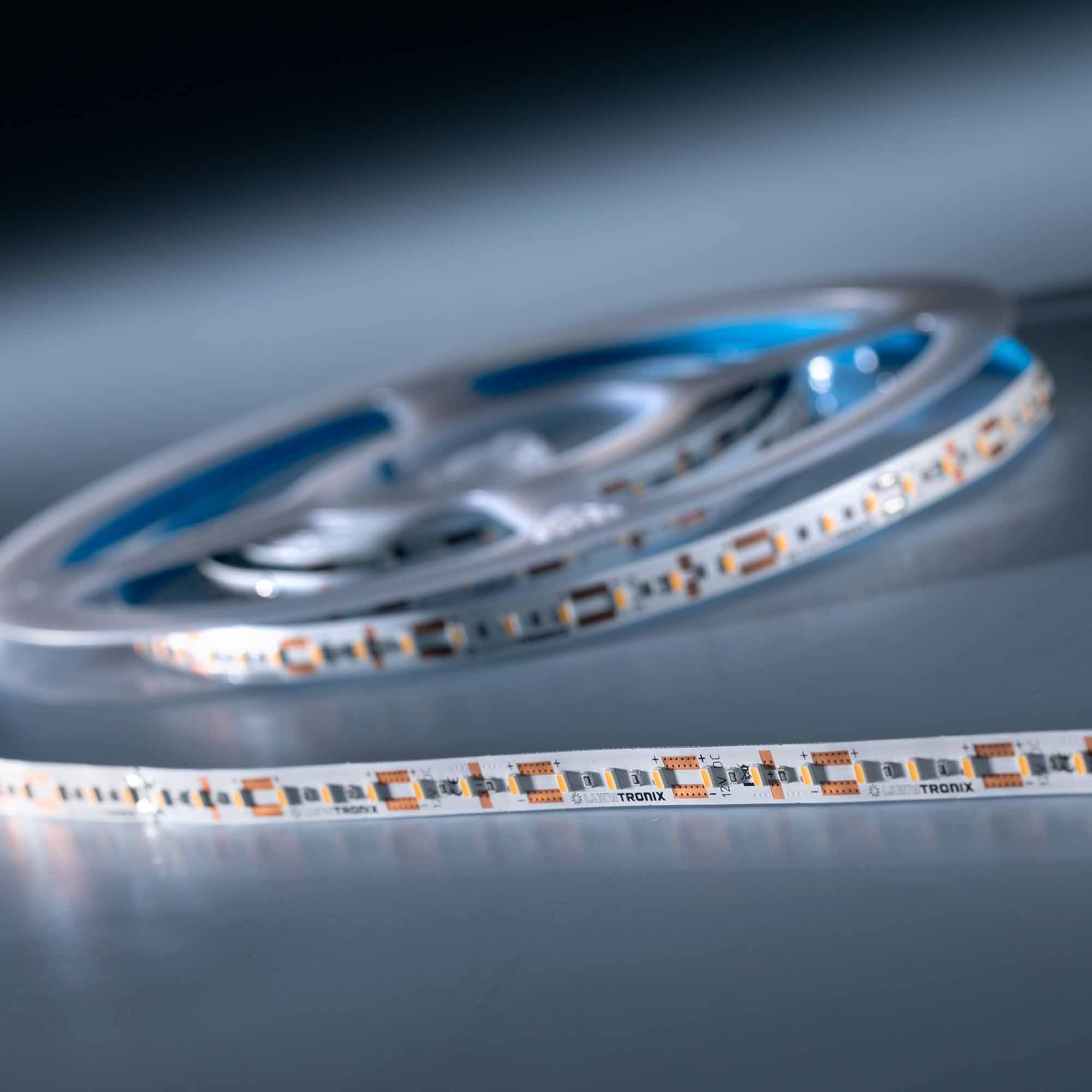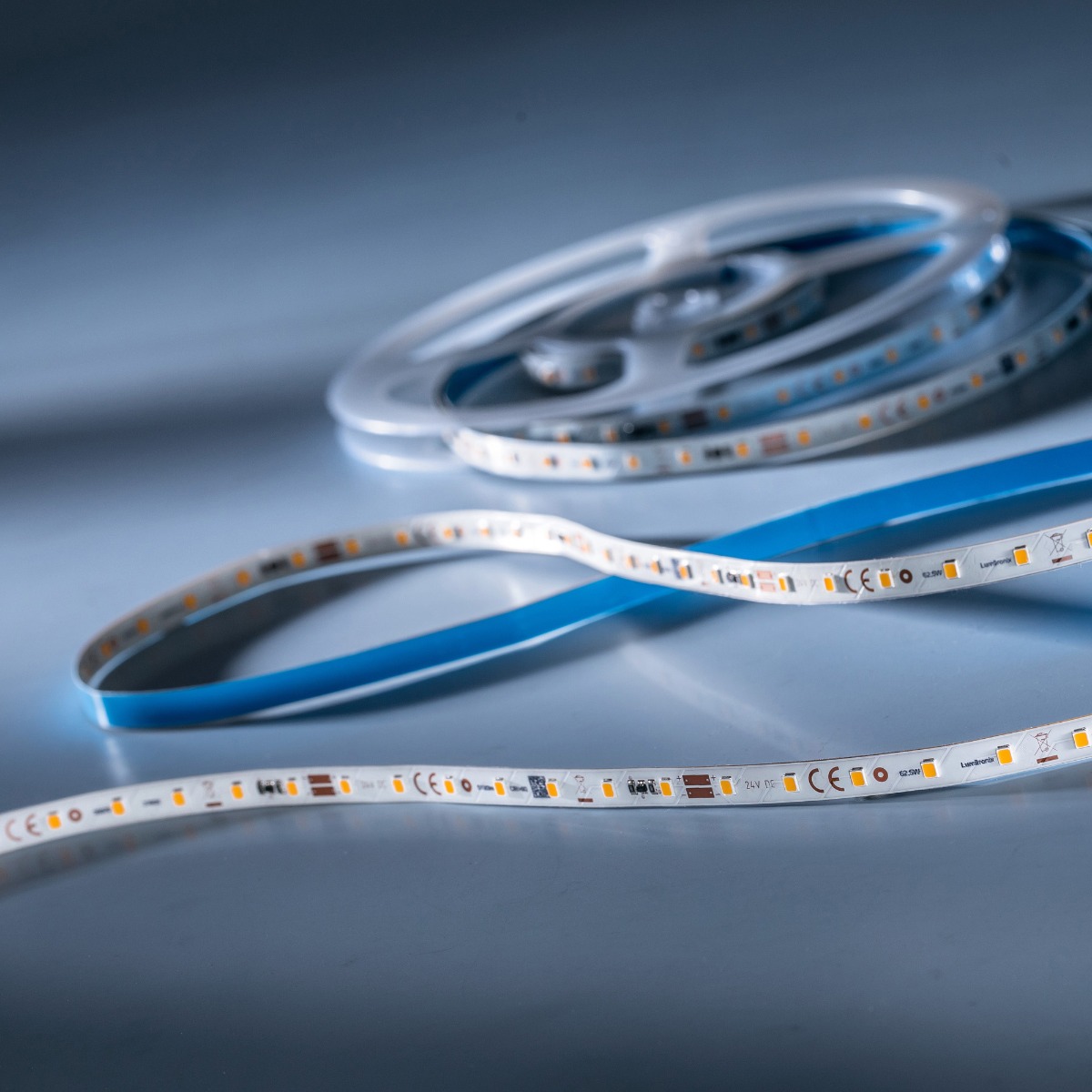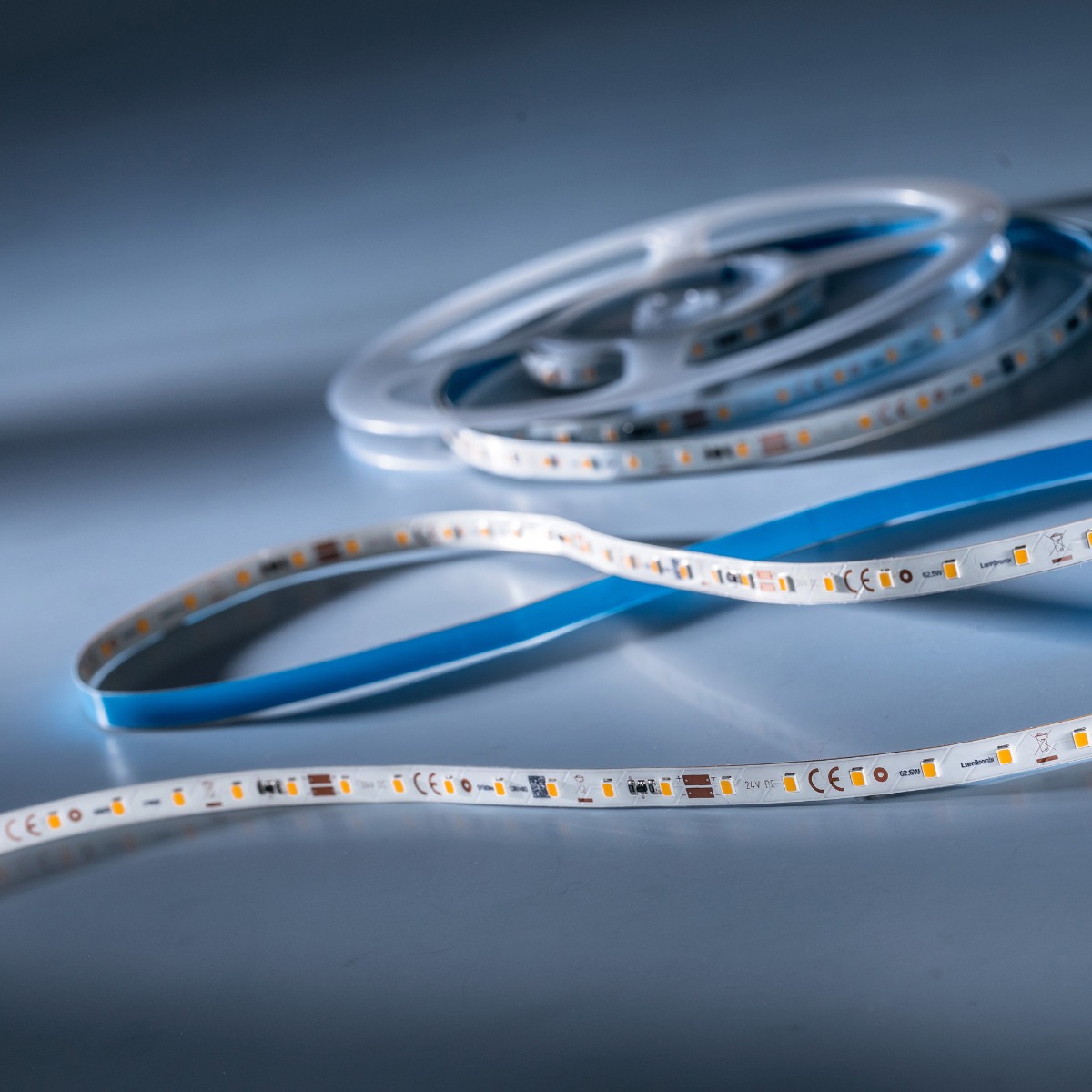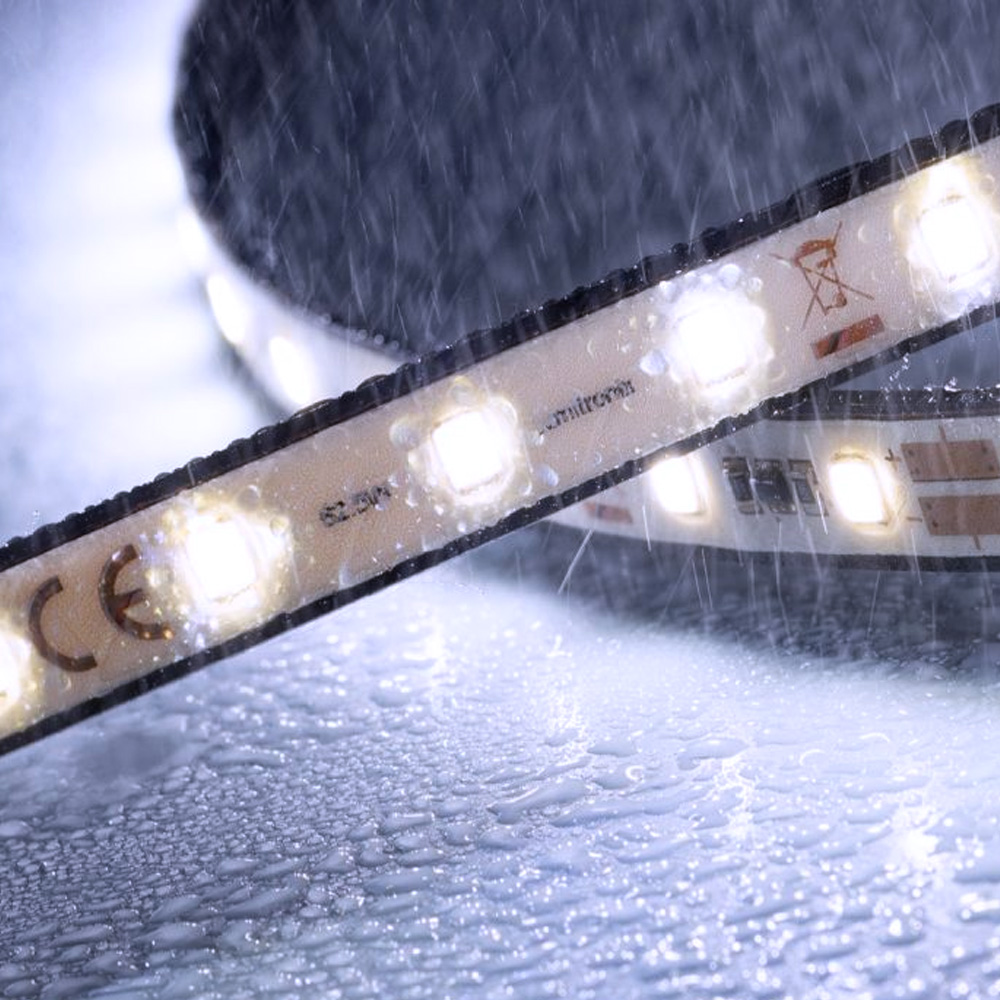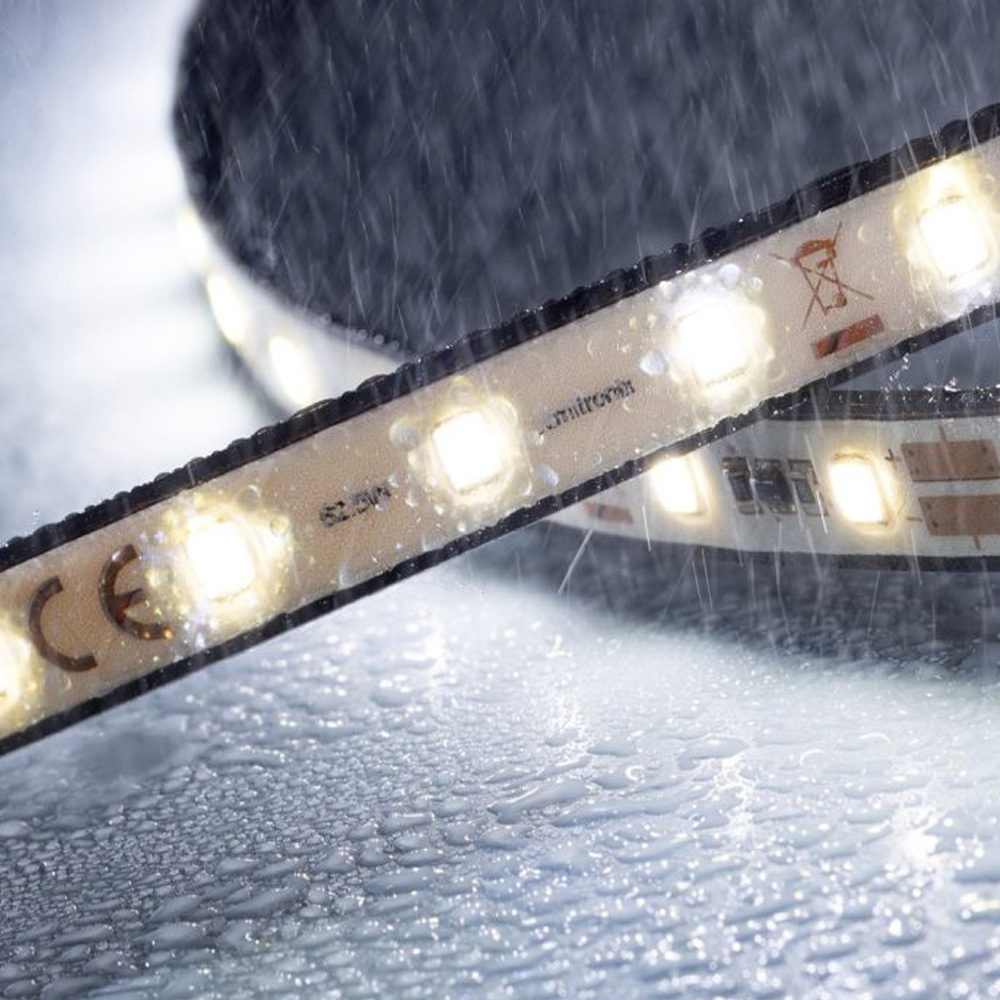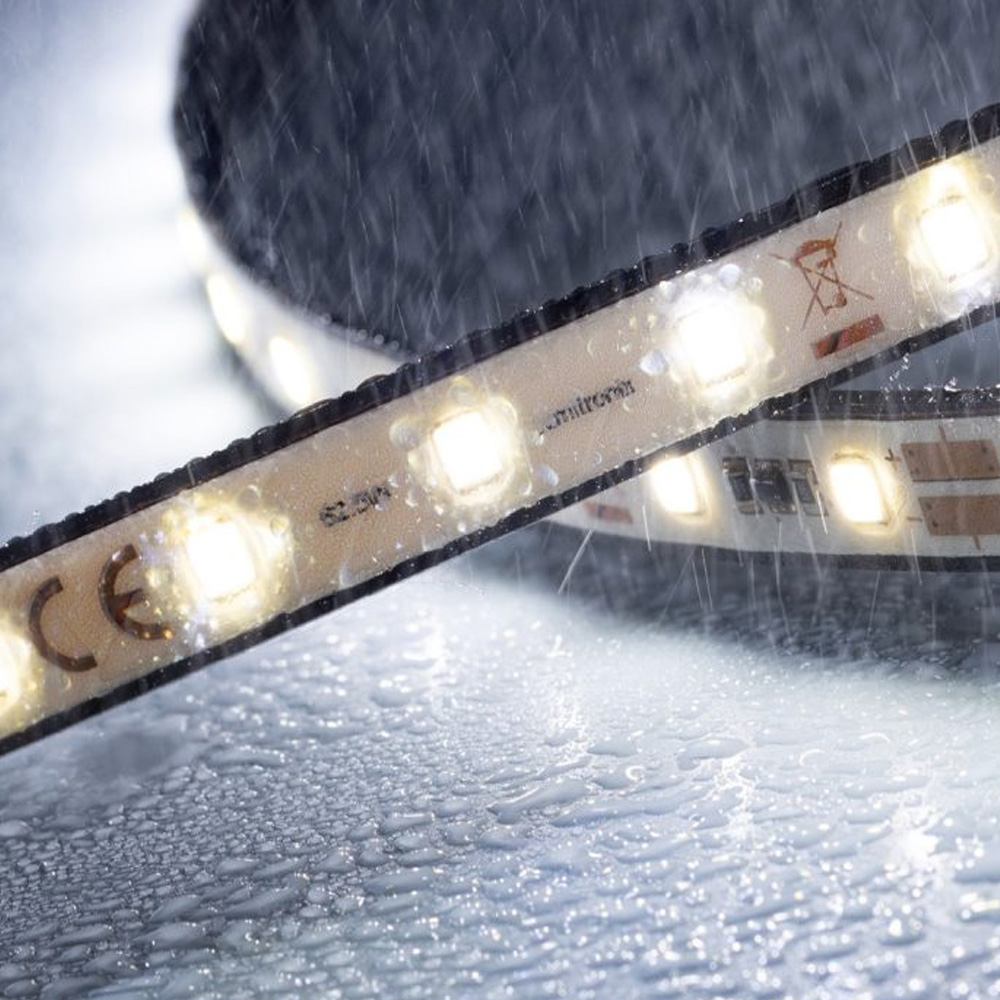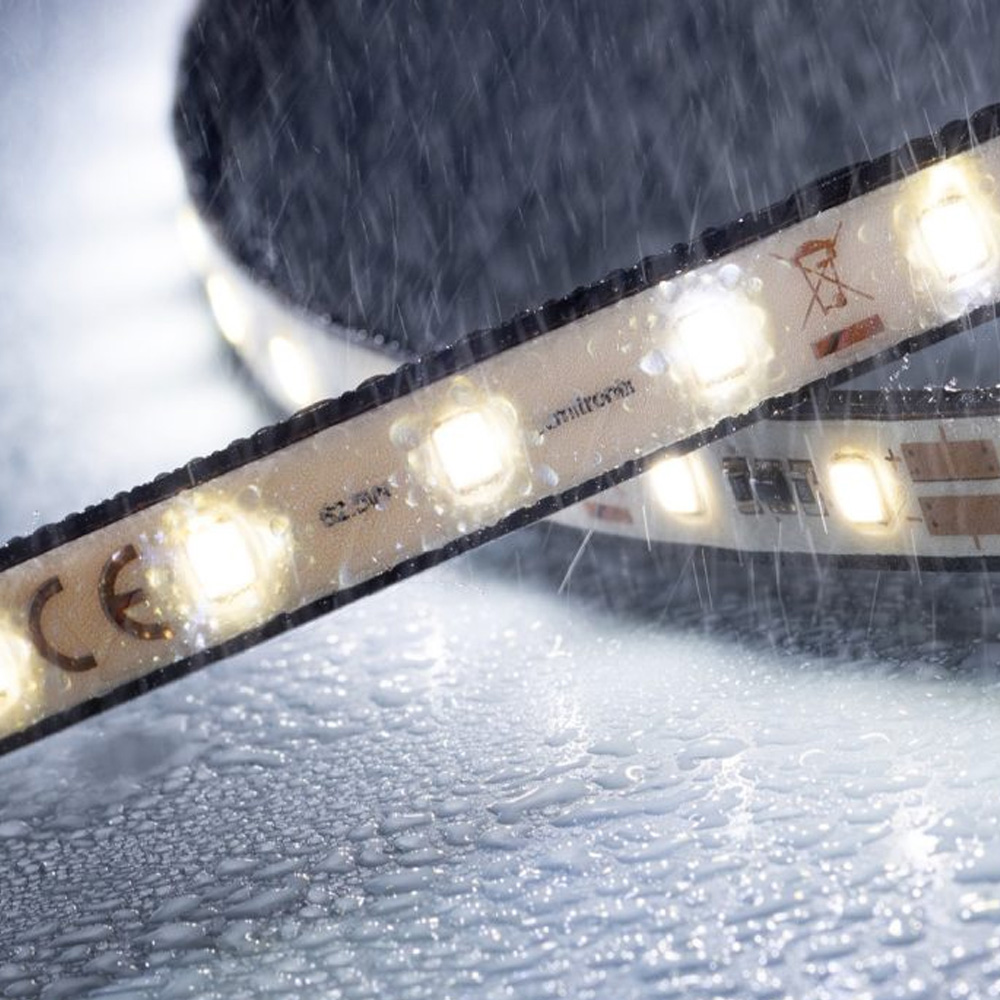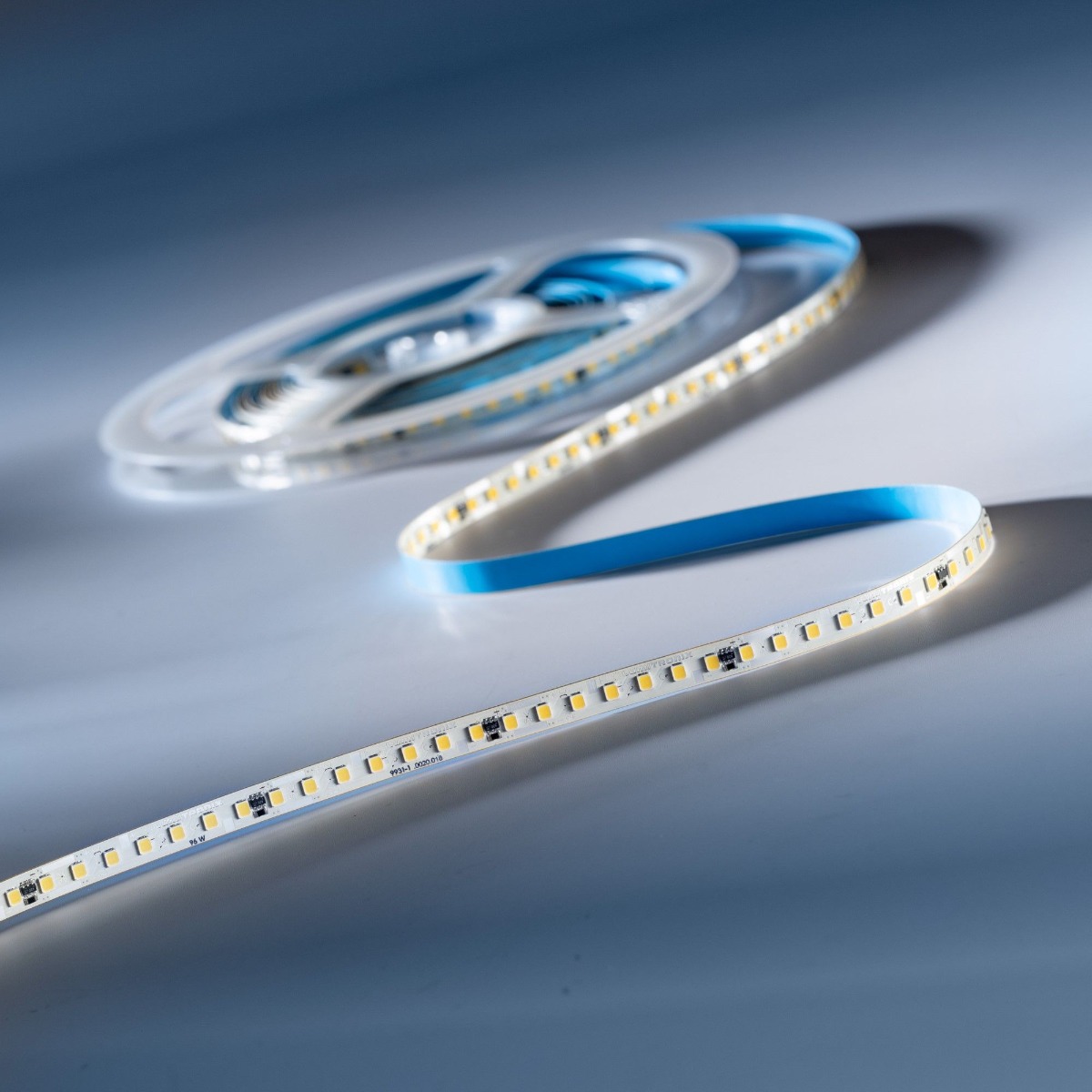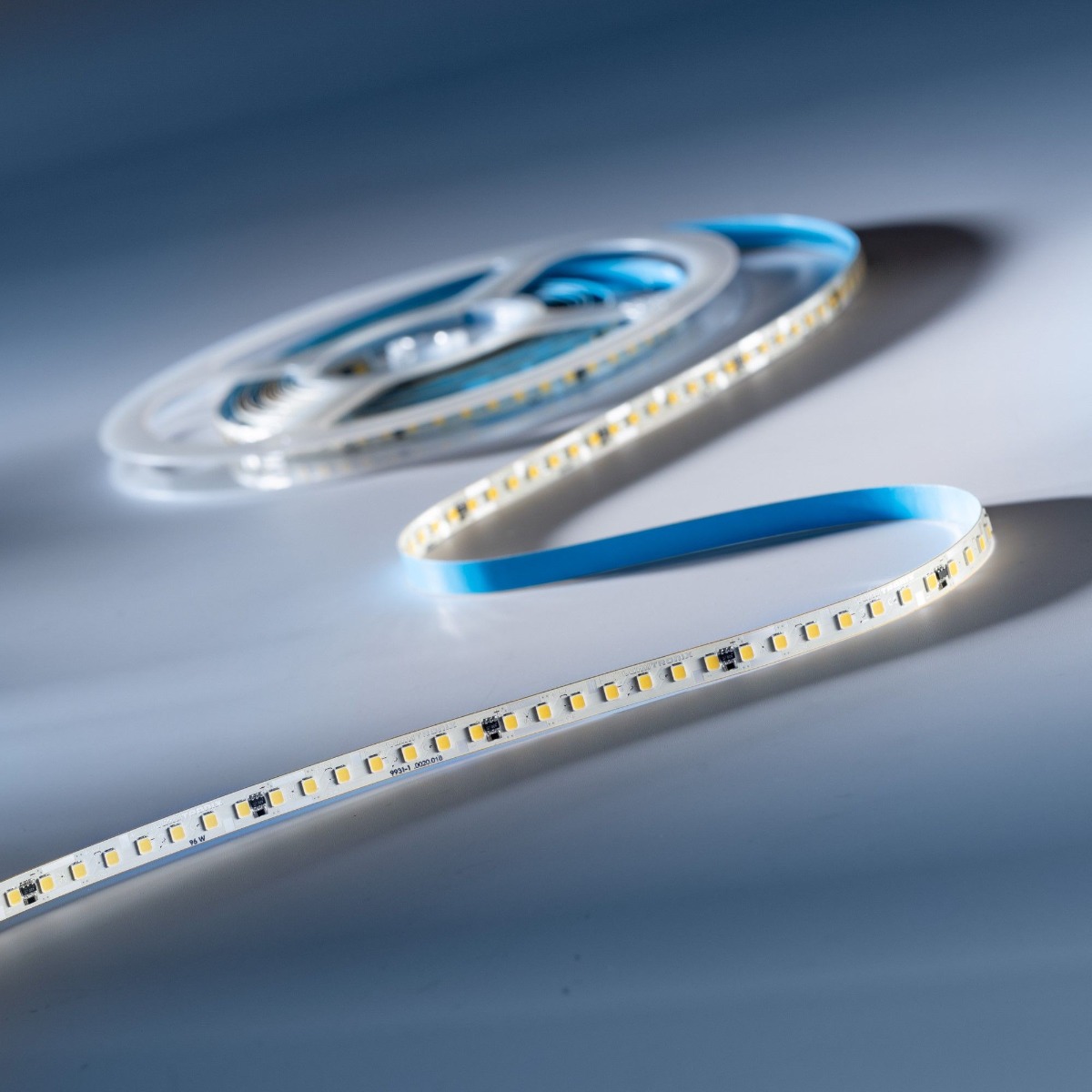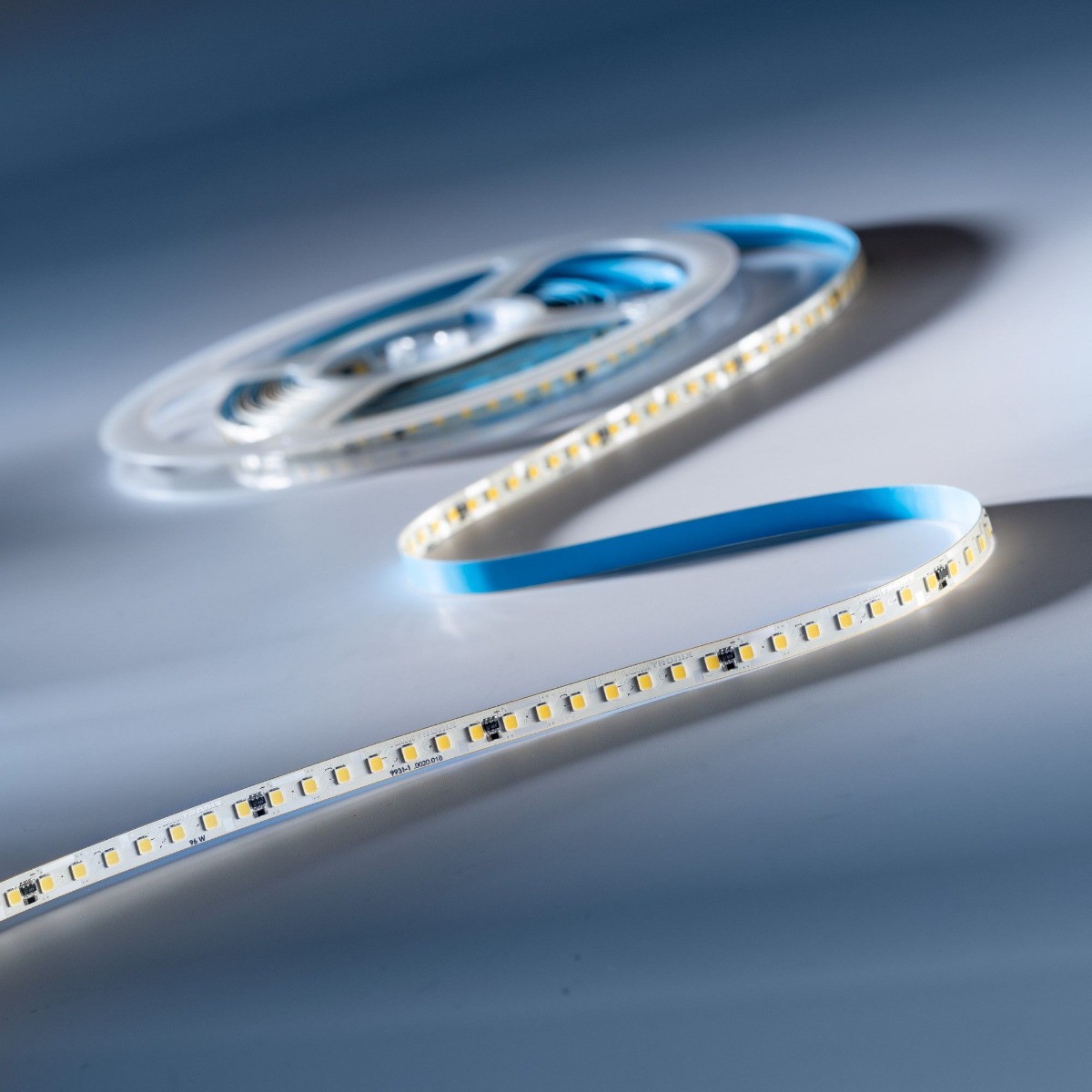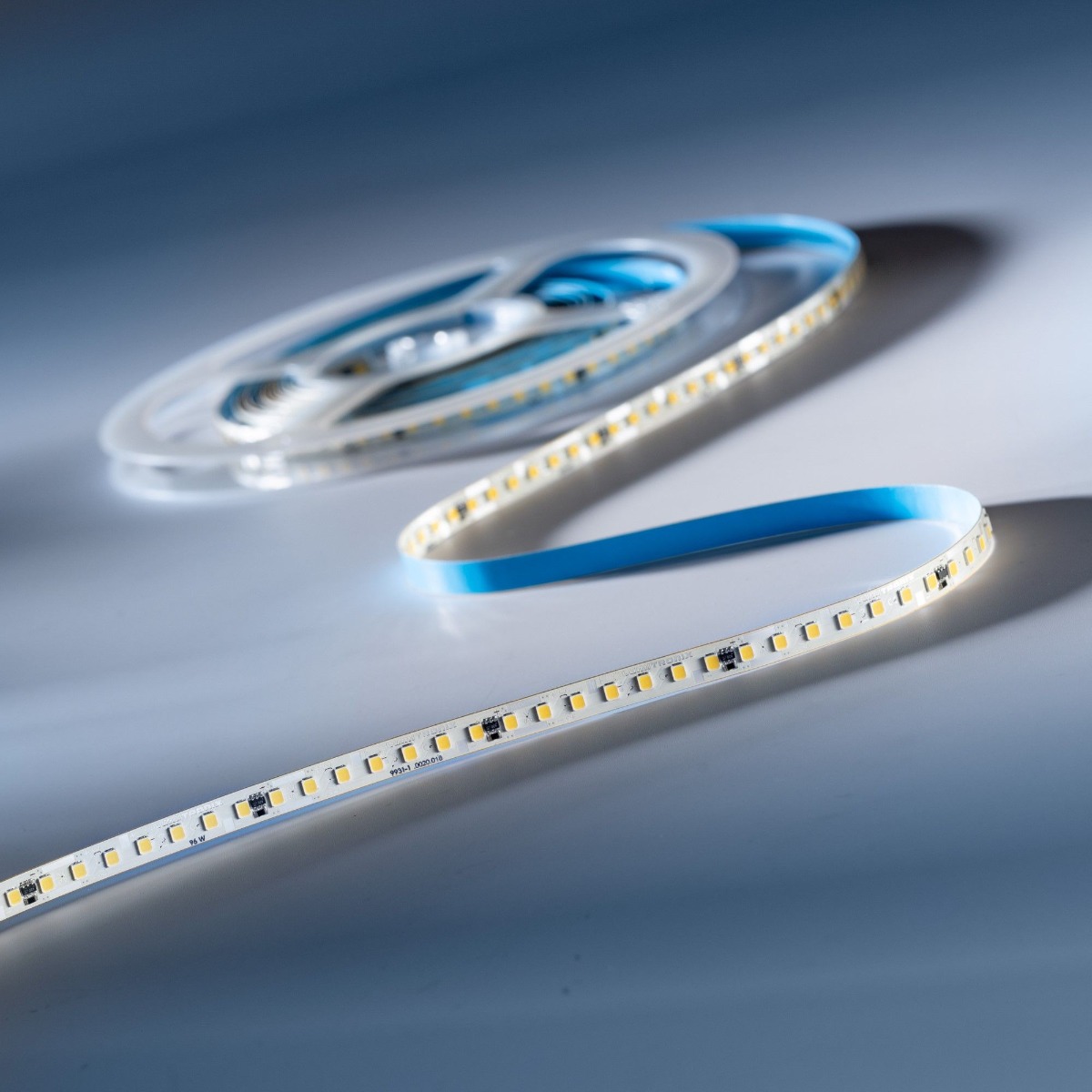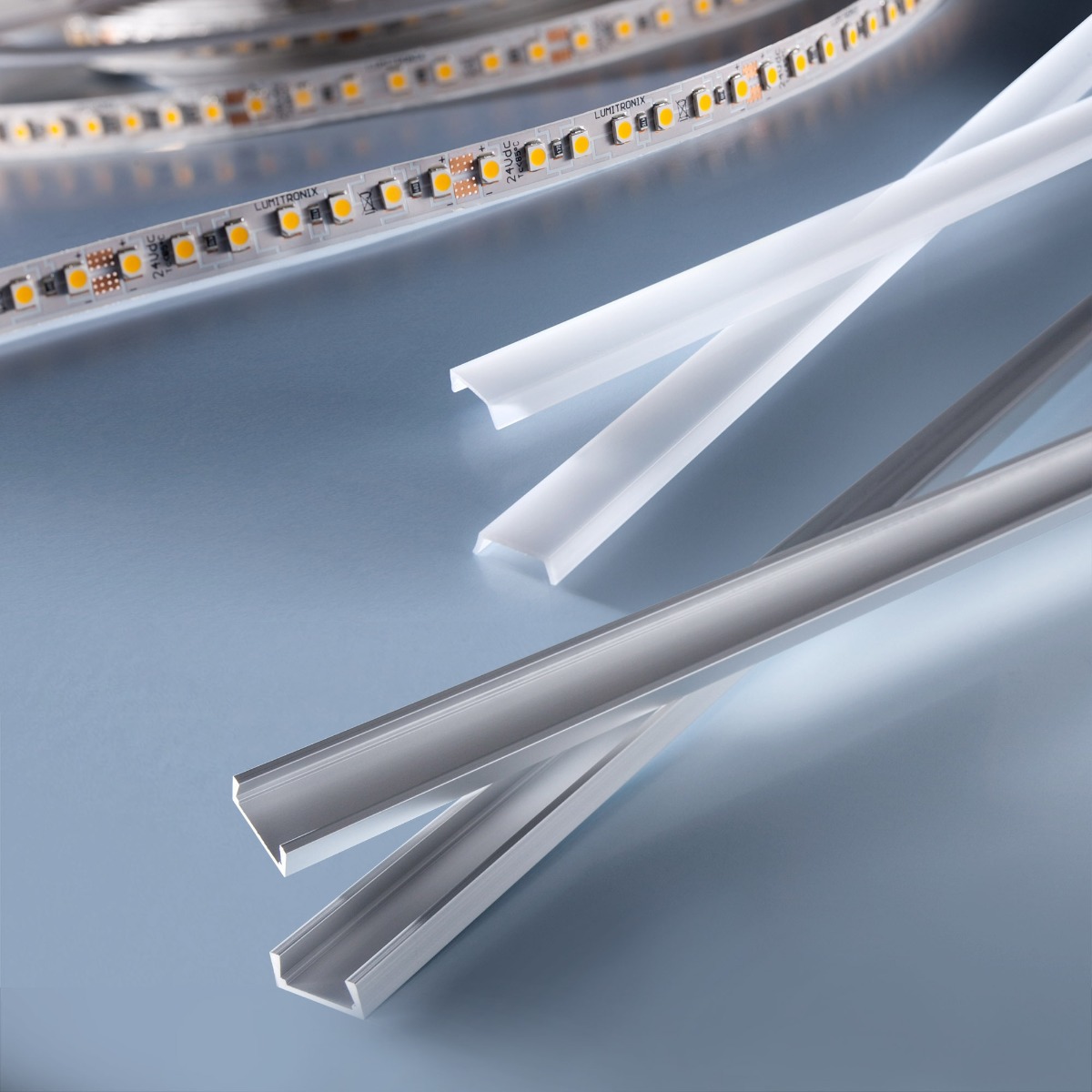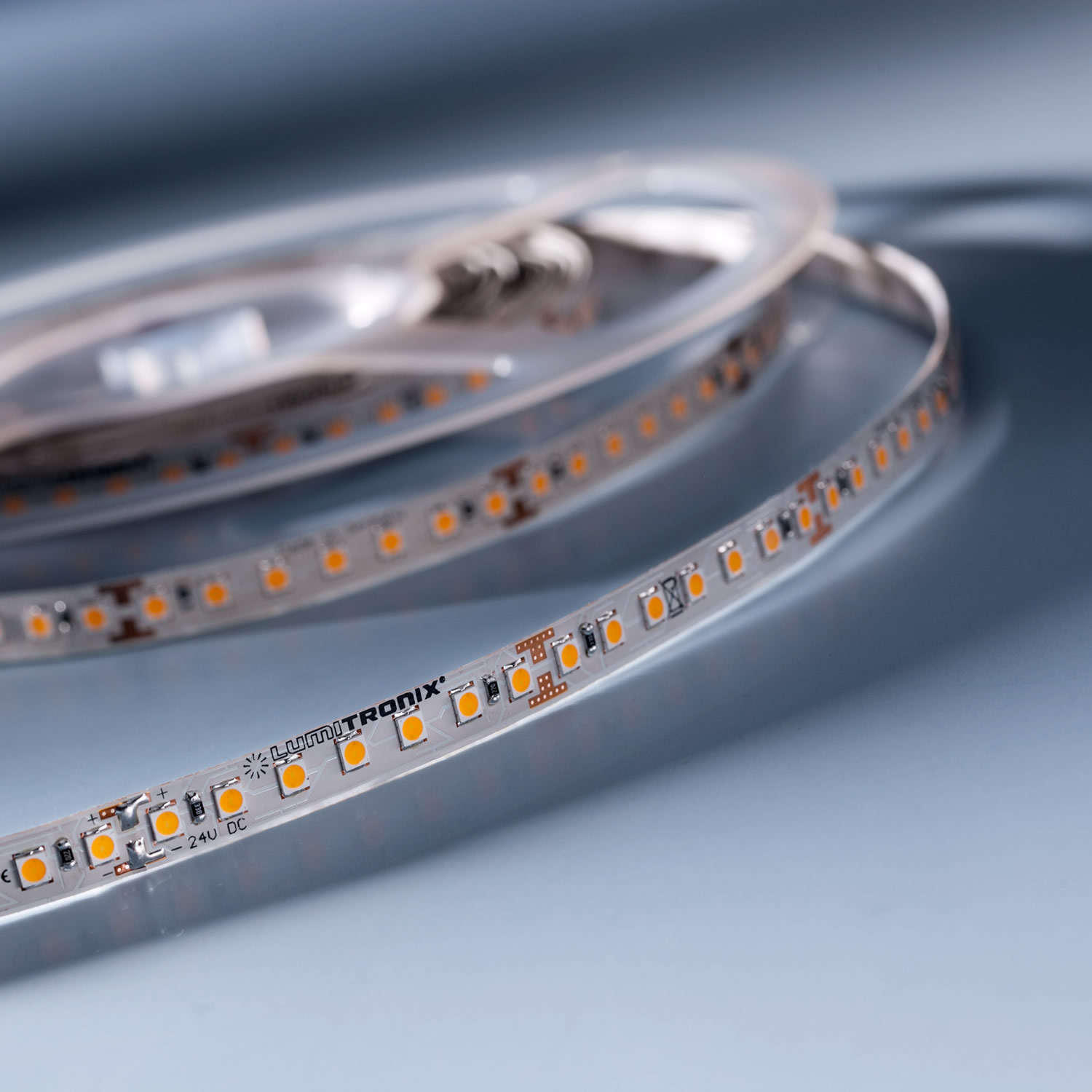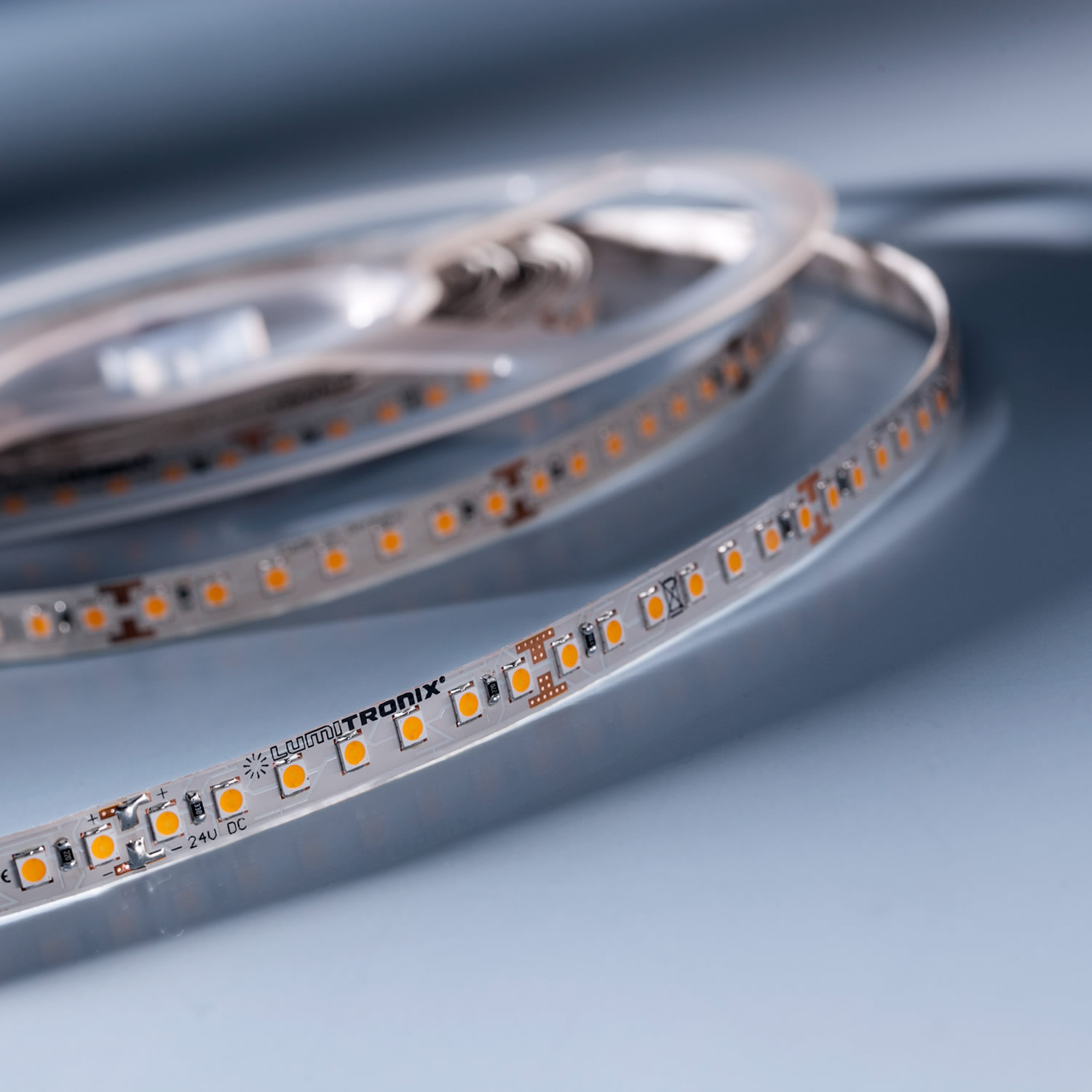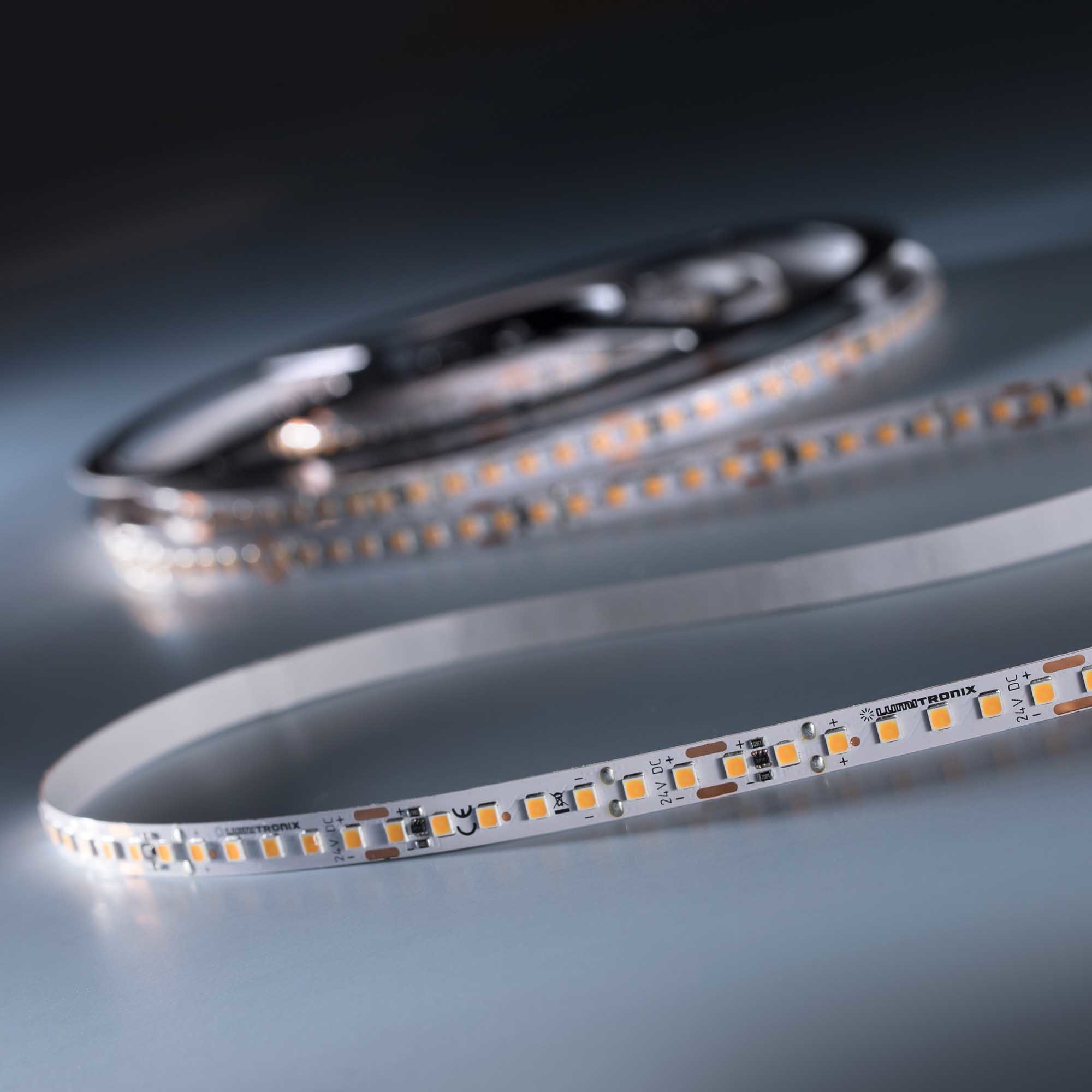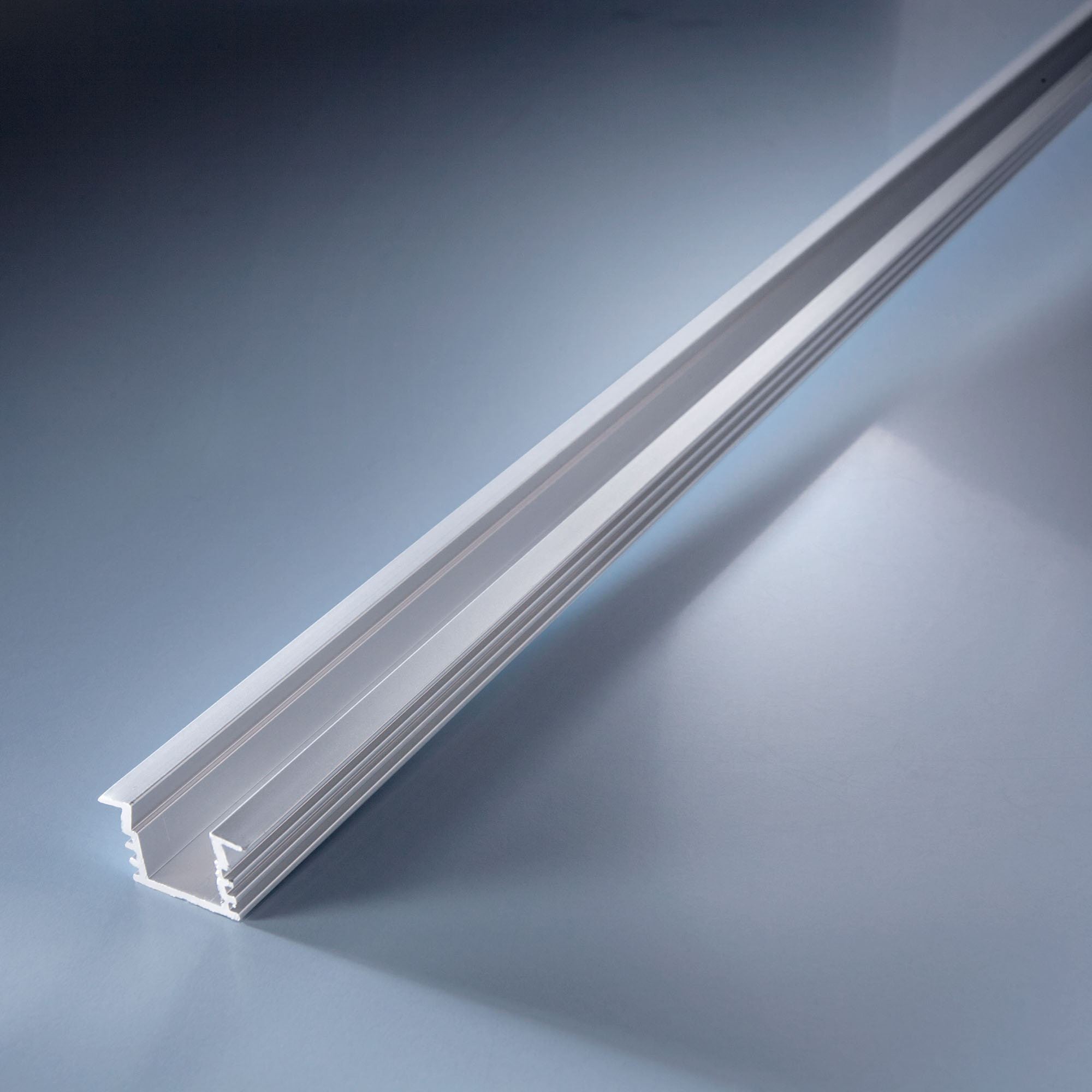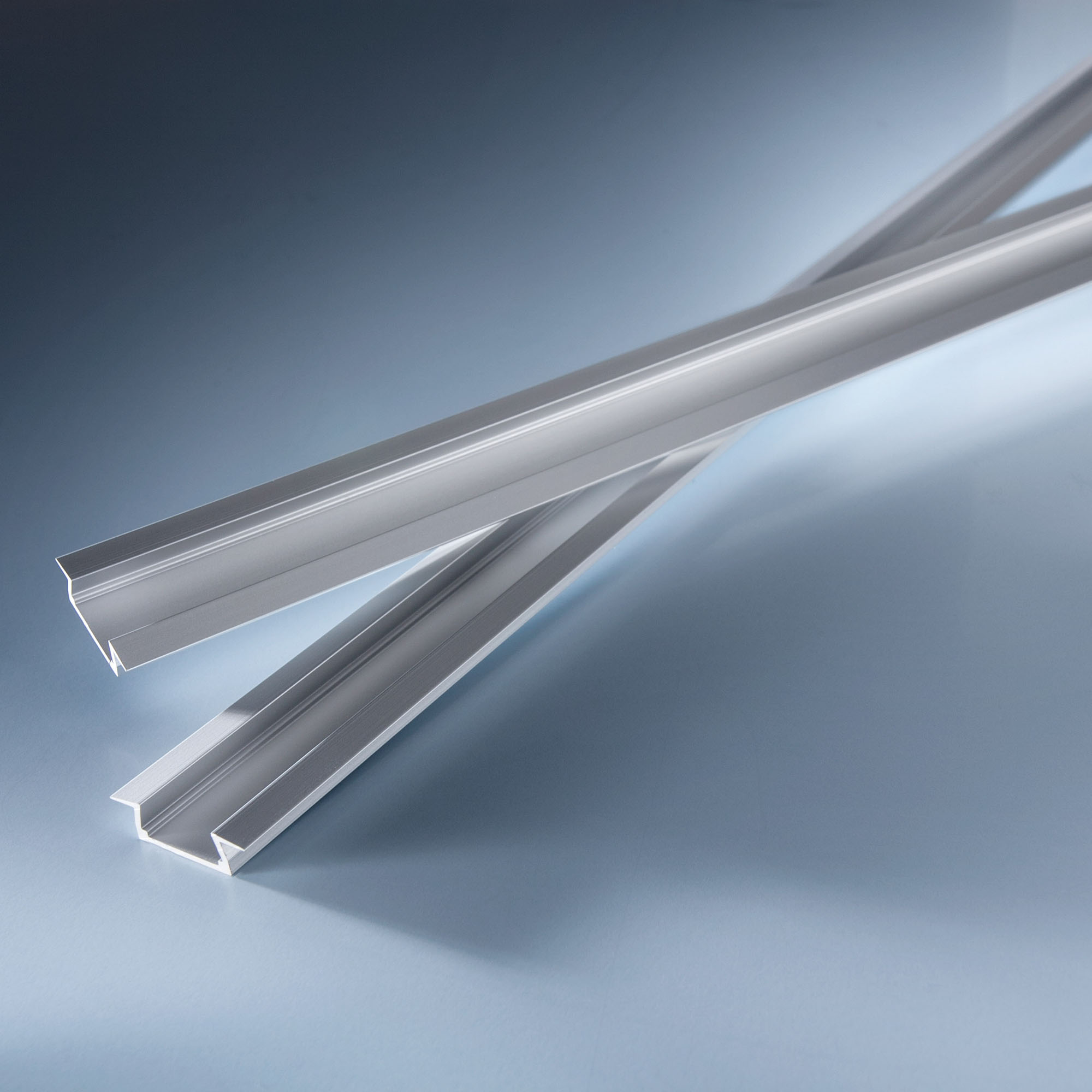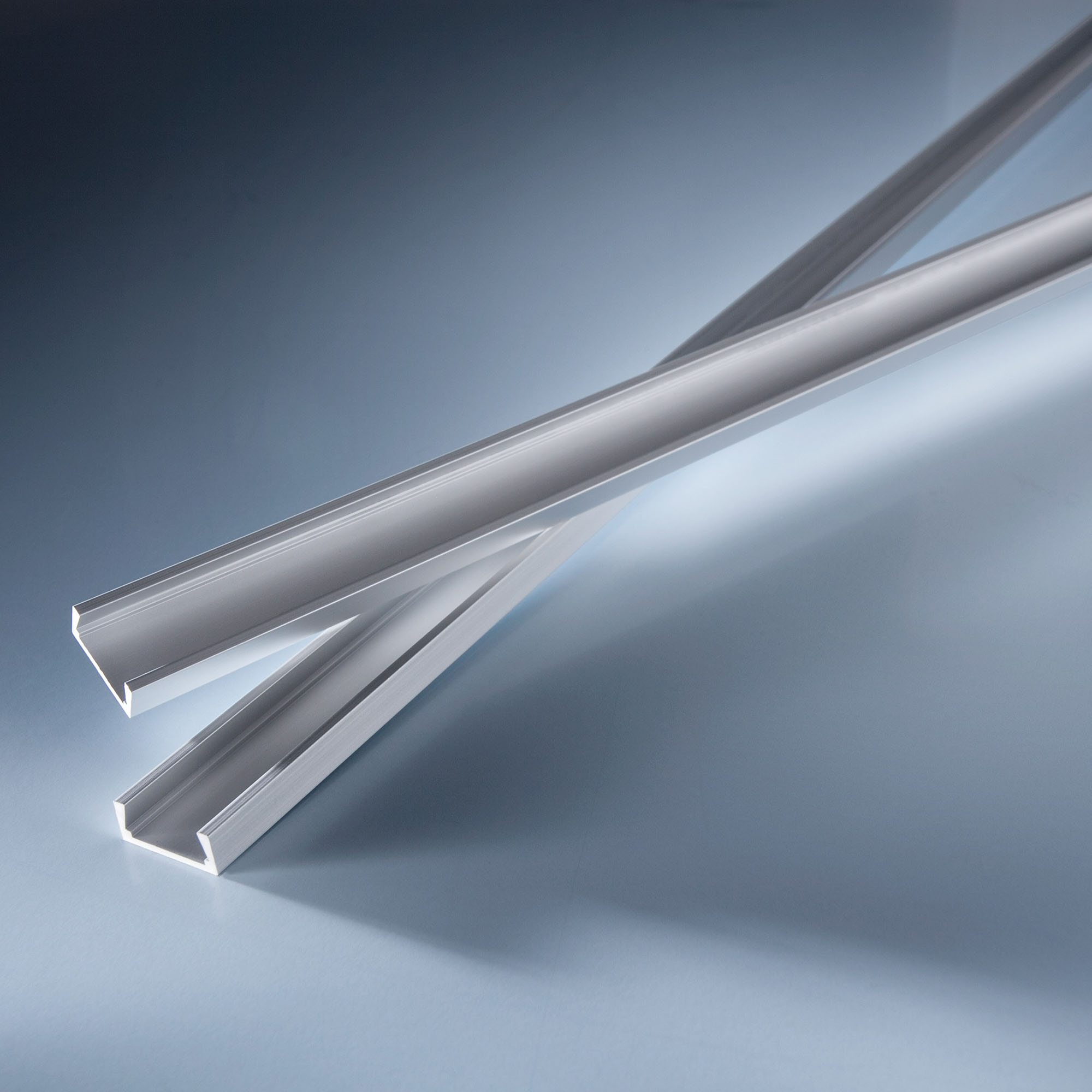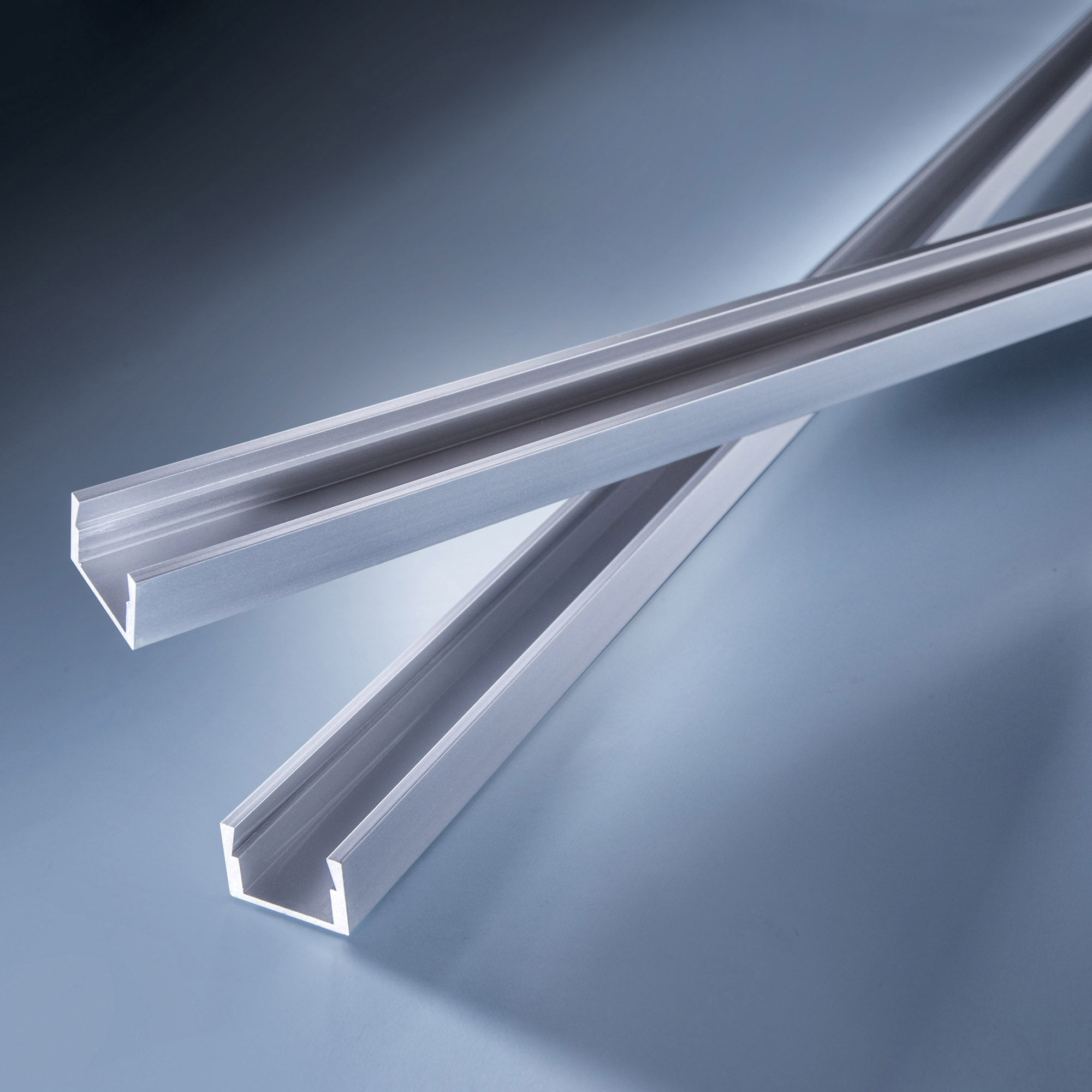Linear light fixture with LED strips lighting guide
- By Ledrise Led Professional
- Mar 1, 2023

Lines of light are a popular new trend in interior lighting design, offering the ability to create personalized installations that can be placed on walls or ceilings in the form of recessed, surface, or suspended lighting fixtures. These lines can be used to create a variety of shapes, from simple squares to more complex geometric designs.
These lighting fixtures are typically constructed using an LED strip that is housed inside an aluminum profile with a translucent white cover. They can be many meters in length, making it possible to create patterns and shapes that are tailored to the specific needs of a space.
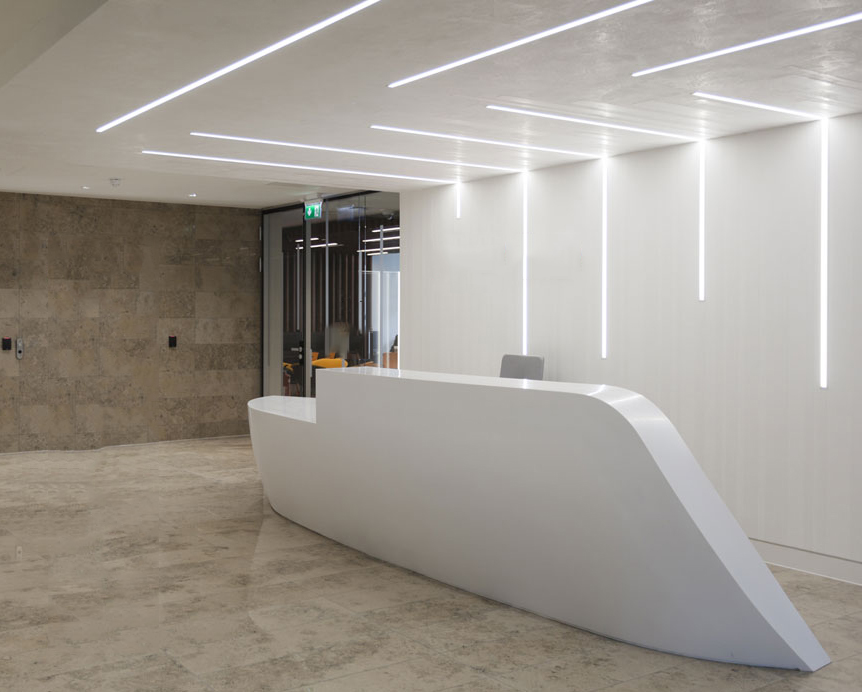 Compared to indirect cove lighting, which is also popular in lighting design, lines of light provide direct lighting. This can be more energy-efficient, but it can also create increased glare. For this reason, it’s important to design lines of light with care and make sure they are dimmable.
Compared to indirect cove lighting, which is also popular in lighting design, lines of light provide direct lighting. This can be more energy-efficient, but it can also create increased glare. For this reason, it’s important to design lines of light with care and make sure they are dimmable.
Let’s explore some tips for achieving the best results with lines of light.
1. Use eco-friendly LED light sources
When selecting LED modules or strips for lines of light, it’s important to choose ones that are eco-friendly. This means they have a very long lifetime of at least 50,000 hours and high energy efficiency, at least 100 lm/w, so that the linear fixtures do not need to be replaced often and have the highest luminous flux with the lowest energy consumption.
If the lines of light are partially hidden and rely on reflection, it’s important to avoid surfaces that are more absorptive than reflective. Dark paint or wood should be avoided, unless the design requires it for energy efficiency. White or light wooden surfaces tend to produce the best results.
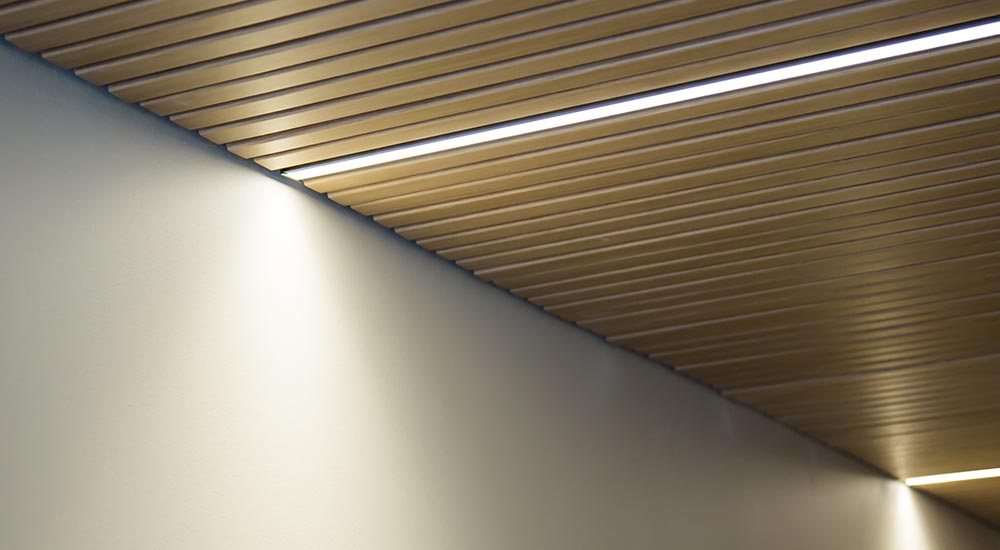
2. Select an LED light source with the correct light output and number of LEDs
The illumination provided by lines of light can serve a variety of purposes, from guiding people through a space to highlighting architectural elements or triggering a particular design trend. At the same time, lines of light can provide ambient, general, or workplace lighting.
For visible, direct lines of light, it’s important to uniformly backlight the translucent cove and avoid hotspots. The first factor to consider is the depth of the profile used. For shallow profiles (7 cm or less), LED strips with continuous light or a minimum of 140 LEDs per meter are recommended. For deeper profiles (12 cm or more), LED strips with 70–140 LEDs per meter can be used.
It’s important to let the purpose of lighting in a room determine the type and luminous flux of the light source to be used. Here are some guidelines for luminous flux per meter:
A) Ambient light or highlight of objects or furniture elements: up to 600 lumens per meter (200 lm per foot)
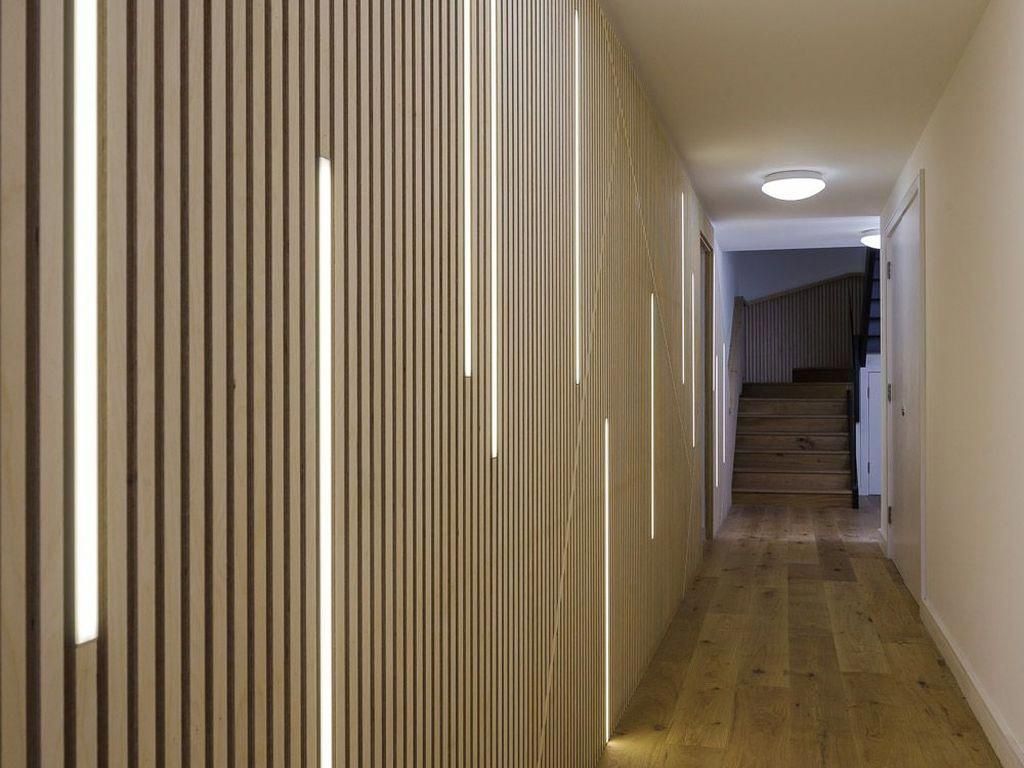
B) General lighting for residential: up to 1200 lumens per meter or 400 lm/foot
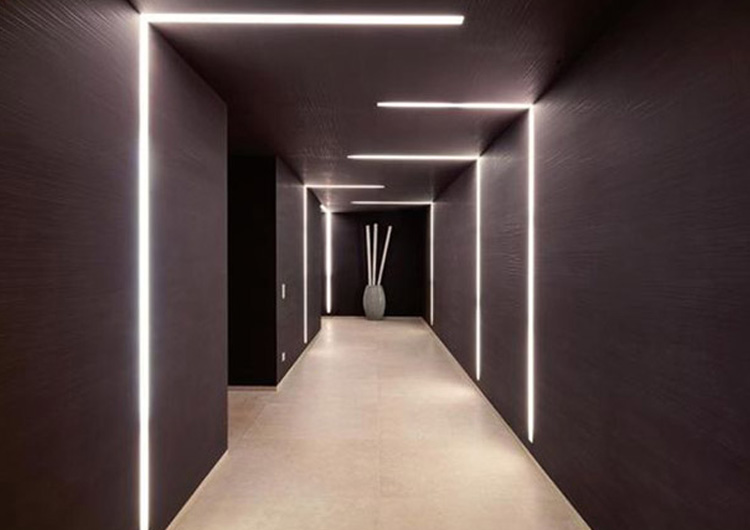
C) General lighting for commercial and business applications or workplace lighting: up to 2900 lumens per meter (700 lm/foot).
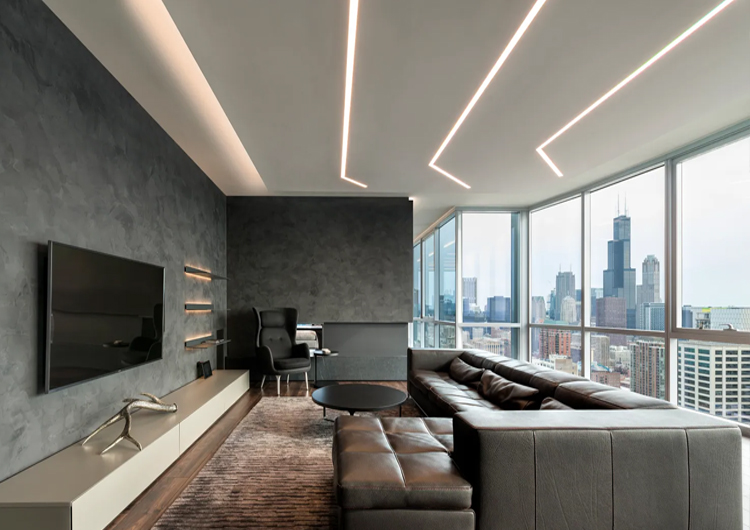
For example, for a living room that is 20 sqm with a height of 2.5m and the purpose of general lighting, here are some suggested lengths of lines of light based on their luminous flux:
- Lines of light with 500 lm/meter: at least 20 meters total length
- Lines of light with 1000 lm/m: at least 10 meters total length
- Lines of light with 2500 lm/m: at least 4 meters in total length
3. Use LED strips that are easy to install and have low redundancy of parts
The light sources should be easily installed over long distances and use as few auxiliary items as possible, such as wires, connectors, screws, or transformers. A large capacity transformer is recommended, and we discourage purchasing “LED strip kits” with 5 m length and an included transformer for rooms using more than 10 meters of strip.
4. Place lines of light so glare is reduced
With many lines of light in a space, glare can become a serious issue affecting well-being or productivity. To avoid this, place lines of light at the extremities of a space, so the light will uniformly wash down on a wall.
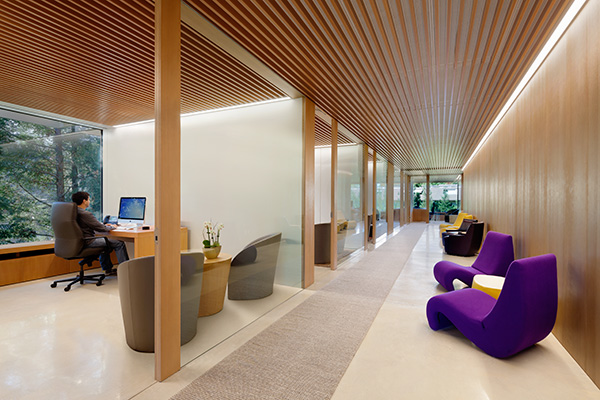
5. Use LED modules or strips with the best light quality, spectrum and color rendering index.
For general and workplace lighting, select lines of light that closely match daylight in light spectrum and color temperature. The best results for lighting similar to sunlight come from LEDs with full-spectrum technology, such as the CRI98+ Seoul Semiconductor SunLike LEDs, with almost day-like spectrum and maximum scores for all the CRI test colors. We recommend LED strips with a minimum CRI80 for all work and living spaces and a CRI98+ as the recommended value.
The best results compared for lighting similar with sunlight come from LEDs with full spectrum technology, such as the CRI 99+ Nichia Optisolis LEDs and CRI98+ Seoul Semiconductor SunLike LEDs, both with almost day-like spectrum and maximum scores for all the CRI test colors. Their spectrum and how it compares to sunlight and other light sources:
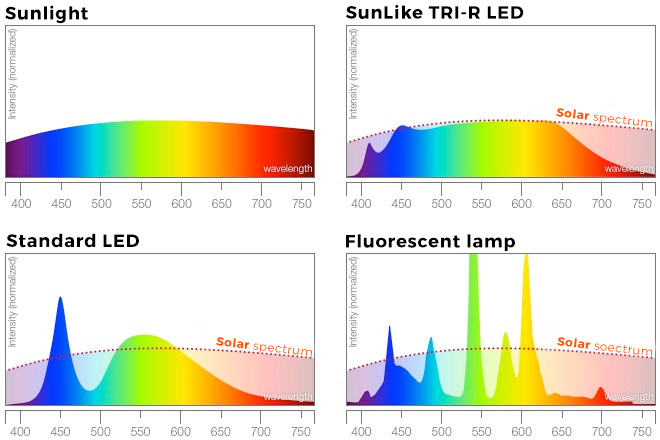
We recommend LED strips with minimum CRI80 for all work and living places, such as office, living room, dining room bedroom and so on with CRI98+ as the recommended value.

6. Install high quality LED modules or strips.
Install LED modules or strips with the longest lifetime, lowest color shift, and best lumen maintenance. Select long-lasting LED light sources with minimal color shift over time, especially for installations with considerable lengths. If the brightness of the light source fades too soon, or the color temperature changes, the only solution for uniform lighting may be to replace the entire installation.
For example, if "LEDs 1" are used in the installation and the light changes as in the image on the right, replacing only some sections with "LEDs 2" will exacerbate the lack of uniformity, as in the image below.

In addition to the above tips, there are several other considerations to keep in mind when using lines of light in interior lighting design. For example, it is essential to consider the purpose of the lighting and the mood you wish to create in the room. If you want to create a warm and cozy ambiance, you can use warmer color temperature LED strips, while cooler color temperatures are suitable for a more modern and minimalist design.
Another critical aspect to consider is the placement of the lines of light, as this can significantly impact the overall effect of the lighting. In general, lines of light can be used to highlight architectural elements, guide people through a space, or provide ambient lighting. For example, you can use lines of light to create a pathway along a corridor or to highlight a particular piece of artwork.
In conclusion, lines of light are a versatile and exciting trend in interior lighting design that can provide a range of benefits, from energy efficiency to a personalized and unique installation. By following the tips outlined above and considering the purpose and placement of the lighting, you can create a beautiful and functional lighting scheme that enhances the overall ambiance of the space.
On our website you will find many flexible LED strips to build the best lines of light possible.
1. LED strips with high LED count, for continuous lines of light
2. LED strips for lines of light with up to 600 lm/m
3. LED strips for lines of light with up to 1200 lm/m
4. LED strips for line of light up to 2900 lm/m
5. Full spectrum LED strips with CRI98+ with SunLike Tri-R technology from Toshiba and Seoul Semiconductor for the most natural lighting possible
For linear fixtures as lines of light, you can choose from recessed or surface place aluminum profiles:
